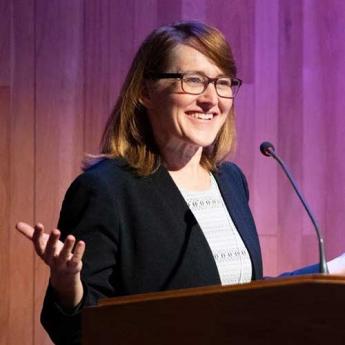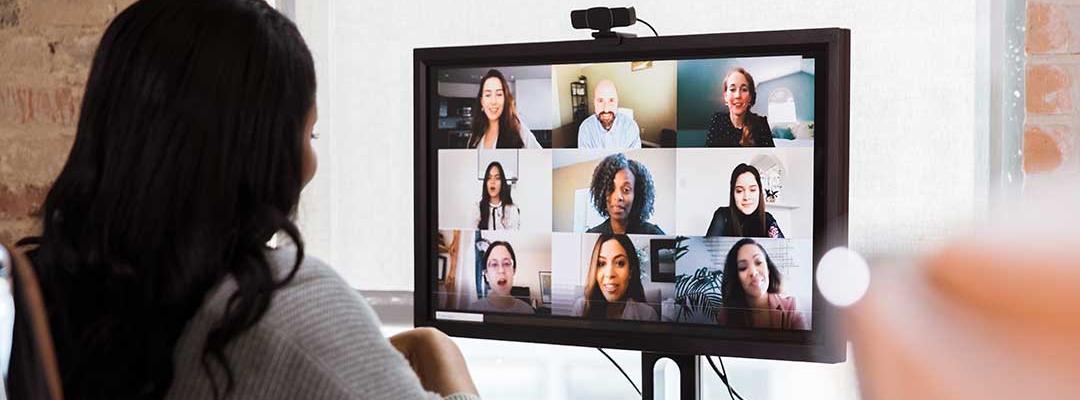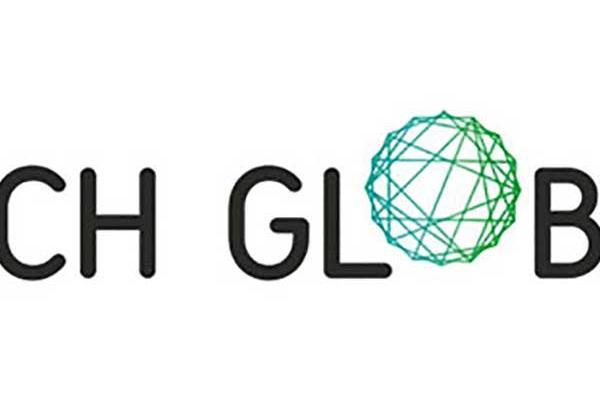Leaders across industries are struggling to find the right compromise between business objectives of performance and creativity, efficiency and innovation, and employees voicing their wishes to return to an office or stay at home indefinitely.
In addition, the level of technological adoption across organizations and departments is creating a growing discrepancy between and within companies.
With the Conservatoire National des Arts et Métiers (CNAM), we recently hosted a unique panel to gain their international perspectives on strategies that corporations are considering for the future of work.
Meet the Panelists
John O'Duinn, Strategist, Mentor and Author of Distributed Teams: The Art and Practice to Work Together While Physically Apart Jill Finlayson, Director, EDGE in Tech Initiative at UC (Expanding Diversity and Gender Equity in Tech), co-sponsored by CITRIS and Berkeley Engineering Dr. Anne Berthinier Poncet, Ph.D., Maître de Conférence Innovation Management CNAM Patrick Buffard, Executive Vice President of FDJ, the French Lottery

John is a computer guy who has written code and led teams in companies ranging from four-person startups to nonprofits to multinationals—including in the U.S. government as part of the U.S. Digital Service in the Obama White House. John has worked in distributed companies for 28 years, led distributed teams for 14 years, and ran workshops and mentored distributed companies for six years.

Prior to Berkeley, Jill led mentorship and developed incubator and accelerator programs for Singularity University Ventures, whose mission is to increase the number of impact-focused tech startups. Jill ran the Toys category for five years at eBay and authored Fundraising on eBay. Jill also judges and coaches founders of global startups for several startup competitions. She has mentored for TechWomen.org for the past nine years.

Anne holds a Ph.D. in Strategic Management and is currently associate professor at the CNAM Paris (France), where she teaches innovation management at the master’s and M.B.A. level, and supervises the Master in Innovation Management. Her main research topics focus on the management of collaborative innovation in various environments: innovation and entrepreneurial ecosystems, innovation clusters, Fablabs, innovation labs and innovation communities.

Patrick has been Executive Vice President at FDJ for the past 13 years, leading marketing, supply chain, and retail and digital sales. He has developed strong brands for FDJ, Loto, Euro Millions and Evian.
What should managers think about when finding new ways of organizing their employees?
Jill Finlayson: The COVID crisis had very disproportionate impacts on women and people of color. There are 1.5 million fewer working mothers in the workforce today than this time last year. And for every woman who has entered the workforce in April, roughly 2.2 men have returned to work. This is a dramatic difference, and it has undone decades of progress for inclusion. We found that men have been promoted three times more often than women during the pandemic—34 percent of the men working remotely with children at home compared to 9 percent of women in the same situation. And 26 percent of men received a pay raise while working remotely as compared to 13 percent of women.
That's why we need to have a different type of leadership. We need to be thinking about a human-centric work environment rather than an office-centric environment. This means trust, empathy-based management—providing flexibility, listening, understanding and supporting your employees so that you can understand the context that they're operating in.
Secondly, we need to rethink and revise practices, policies and benefits. Flexible time is very beneficial to people with outside work responsibilities. How do we go to a new and better normal? This crisis gives us the opportunity to look at the policies, practices and benefits, and ask, “Are these the ones that matter? Are these the ones that we want to offer?”
We're going to need support for people who are doing remote work. Do they have the equipment and tools to do long-term work remotely? Or better yet, do they have access to a coworking facility if they don't have a place where they can be away from distractions and access high-speed internet? Are those benefits being equitably offered?
We need to be thinking about a human-centric work environment rather than an office-centric environment.
—Jill Finlayson
Anne Berthinier Poncet: I've been looking at the impact of proximity on the performance of innovation for companies. We talk about the importance of geographical proximity because it enables interactions and trust. And then there is cognitive proximity, which is linked to the knowledge we share together and to all the knowledge experiences that we can have. We need to find a balance. We don't need to be close together and interact all the time, but we need moments to enable this social proximity to develop.
We might be able to have temporary proximities: You will be interacting in front of each other through the use of online platforms to continue this sharing of information.
John O’Duinn: Any organization is just a collection of humans working on a problem. The change is in how you lead and organize companies. This is a leadership challenge.
This is not normal working from home. A lot of people want to go back to the office because they want to go back to life before COVID. If you say you must come back to the office, what happens to the people who have to commute? How do you deal with vaccines, vaccine certificates, proof of vaccination? Are you allowed to do this?
The workforce diversity gets easier if you can hire people who can live anywhere and do not have to commute. There's an interesting project I'm working on with California’s Air Resources Board to measure all of the carbon-footprint sources that affect climate change. The biggest factor in that list—at 28 percent—is people driving their cars to and from the office. We can tackle this problem if we default it to work from home. And then you intentionally schedule times when people can meet.
The workforce diversity gets easier if you can hire people who can live anywhere and do not have to commute.
—John O'Duinn
Patrick Buffard: We have been able to manage our business from the homes of our employees with no real loss of productivity. It has helped our employees save time in transportation.
On the other hand, remote work sometimes proved to be less efficient, especially when we needed to work collectively, when we wanted to engage in a creative process, when we were trying to solve problems. We have a dedicated creative room and a creative team to help our employees develop new concepts or new solutions. We have tried to adapt this area to a virtual space. It worked, but it was probably less effective. Through a screen, we didn’t easily see everyone’s emotions, body language, nonverbal reactions. This is key information when you're in a creative process.
What we will do is increase the number of meeting rooms and drastically reduce individual desks because I don't think the future is really going to be about commuting to the office just to do an individual task.
So how do we find balance?
Jill: There was an article I was just looking at that was about why millions of workers are planning to switch jobs after the pandemic. People are reassessing what they are getting out of their workplace. In the United States, loyalty to an employer is very low; in Silicon Valley, people are leaving companies after two years—or less —which has a dramatic impact on the bottom line if you think about turnover.
So when thinking about putting new practices and policies in place, ask yourself, “What are practices and policies that are going to retain employees?” What are the ones that are going to make them more loyal to some extent because they are going to have the benefits, the flexibility and the support that they need?
This is also a leadership challenge. It's not about seat time; it's about having clear performance indicators and outputs, measuring these things and having exceptional communication skills. This is where leadership training comes into play.
The other thing is people want to have purpose. They want to see that their work matters. Having a good company vision and how they fit into that vision is really important.
How do we recreate “serendipitous meetings” that would happen in a physical space in remote working?
Jill: The “serendipity” wasn't working equally well for everybody in the office. It worked well for outgoing extroverts, people who had an old-boys network. It did not work as well for people who are more introspective.
So one of the benefits of the remote workplace is it brings a lot of work asynchronously. It gave people the opportunity to comment on things and take their time to think. It allows people to use online tools to foster collaboration: In a virtual meeting, you can poll people and hear from everyone. In virtual meetings, everybody's head is the same size; nobody has priority, nobody's sitting next to the boss. It's a very egalitarian, democratized process of holding a meeting. The data shows that people feel like their voice is heard more in this type of environment than in a traditional meeting space.
Anne: We are seeing an increase of in-person corporate-innovation labs to find new ways of developing collaboration and participation between all employees to lead to innovation.
Normally in innovation labs, they use empathic methods like design thinking, but many others promote the idea that everyone has a voice.
It's interesting to see how certain companies decided to use this innovation lab to tackle the problem of remote and non-remote work during the pandemic, whereas other companies, more industrial ones, completely stopped the use of these innovation labs.
I think the innovation lab is a model to be developed for the future to enable not only when people meet, but meeting in a specific environment that also allows for this collaborative innovation.
Patrick: We are a company with a strong innovative culture so collaborative and creative work are very important. So we tried extensively to adapt our collaborative methods to these new tools. You have to give everyone a voice. You have to respect and check that everyone is sharing and has the same time to express their opinions. I think and strongly believe that in order to generate creativity, you need to have some rules and a process.
I think the innovation lab is a model to be developed for the future to enable not only when people meet, but meeting in a specific environment that also allows for this collaborative innovation.
—Anne Berthinier Poncet
John, how do you maintain innovation in a company?
Innovation is a real thing. There is the need for people to come together and for a space to do that intermittently. But it's not a daily commute, not even a weekly commute, but a once-a-month or once-a-quarter commute.
Before COVID, you would need to schedule an innovative brainstorming meeting because you have five people flying in from different cities. It takes two weeks to organize all of these people to come together. When you add in all of the transit time and logistics for the two-hour or half-day meeting, and then all the travel time and logistics for everyone to go back to their various home cities, it’s very inefficient. That actually slows down things.
Companies that are used to innovating while physically apart because they trust each other can out-innovate companies that are required to be at a physical location. They are logically beside each other because they're able to connect with each other in seconds, but they're not physically beside each other.
There's also a cultural shift. People wanted to be in the cube or desk that was near the important person's office—near the VP or the CEO—because then you were seen and recognized. This is one of the things we want to be careful about when asking, “Do all people go back to the office or only some people?”
You have to respect and check that everyone is sharing and has the same time to express their opinions.
—Patrick Buffard
What keyword do you want to leave with our audience?
John: I want to remind people that this is not a technical problem. This is a leadership problem. You want to take care of the human, so make sure that people have the right equipment to be able to do their job.
Anne: I would say think hybrid. We need those moments on site for interactions and collaborative work. We also need to use the platforms and communication to follow the work remotely.
Jill: I would go with equity. This is our opportunity to re-engineer for equity, to access a much larger, more diverse talent pool. It's an opportunity to retain employees because they don't have to be in one place to grow and scale in their job.
Patrick: It will be a question of the adaptation of our management. The key point is to listen to our employees. How do our employees see the future? What are their expectations?



